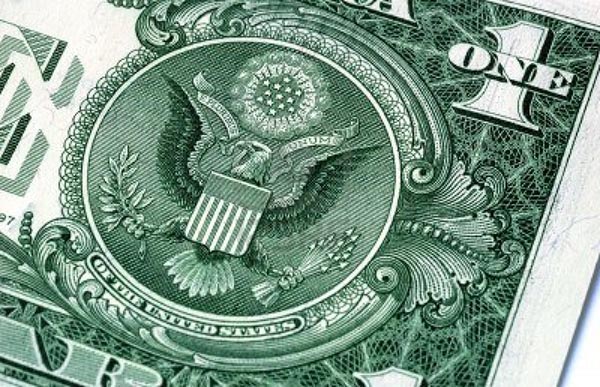It’s just a dollar, we often hear these days referring to the cheapest value of money one can pay for something. While the value of the US dollar or the greenback has eroded over time, it remains the subject of many fascinating information bordering on factual to imaginary. Many urban legends surround the US dollar bills in general and while some of these were pronounced as hoaxes either by the federal government or by dollar experts, a number of them still persist up to this time.
The enduring peculiarity of these stories are either due to the standard (read: vague and cold) dismissal statements of the Fed relegating them as rumors, coupled by narratives from so-called dollar experts and symbolists whose explanations of the dollar mythos are too fascinating to ignore.
While some fantastical narratives have been stamped outright as urban legends, there are a few which remain to be given some solid explanation and closure. We rounded up a list that extracts the facts behind the fables and truth behind the tales of the US greenback. For items where a final verdict is yet to be pronounced, we can let our own perceptions (and imaginations) be the final judge. Here they are.
What is the American Dollar, and How Does It Work?
The American Dollar (USD) is the official currency of the United States and one of the most influential currencies globally. Below are the key aspects of the dollar’s role in the economy:
- Currency Symbol and Division: The U.S. dollar is represented by “$” or “US$” and is subdivided into 100 smaller units called cents.
- Central Bank and Regulation: The Federal Reserve, the nation’s central bank, issues and regulates the U.S. dollar.
- Domestic Use: In the U.S., the dollar is used for everyday transactions, including buying goods and services, receiving wages, and investing.
- Global Role: The dollar functions as a reserve currency, meaning it is widely held by foreign governments and institutions as part of their foreign exchange reserves. It is also the standard currency for trading commodities like oil and gold.
- Value and Influence: The dollar’s value is influenced by various factors, such as U.S. economic performance, inflation rates, and interest rates. Its role as a safe-haven currency makes it a preferred choice during global financial uncertainty.
1. The US Presidential Dollar Coin and The Missing Motto

The Presidential Dollar coins are $1 coins circulated in 2007 similar to the Sacagawea dollar. A coin bears the image of a former US president on the front and a representation of the Statue of Liberty on the back. An error by Fed minting partner Coinwrap, Inc. caused the production of about 50,000 of these coins bearing John Adams and George Washington images without the inscription of the US national motto, In God We Trust, on the edge (thus they are called plain edge dollars).
These plain edge batches are mixed with the entire 3 million coins circulated beginning February 25, 2007, and those who got hold of them begun to cause a stir, giving birth to the widespread rumor that the US government is abandoning the age-old inscription for good.
While the rumor spread and became a subject of heated debates, the US Mint issued an explanation that it was a simple case of minting gone wrong. No details were given as to the specific mistake committed but many attribute this to possible misalignment or a slip in batch minting. As to why the front and back symbols and inscriptions were not skipped, this is because they entail a different process and machine from edge inscripting. So far, the minting error explanation was accepted by the general public. Due to expense and effort it will entail, there was no recall of the plain edge dollar coins, which became one of the most popular hunts for coin collectors.
2. The Diminishing God in US Currency

The absence of the In God We Trust marking on some of the US Presidential Dollar was not the sole controversy involving this coin. Many decry the repositioning of the national motto from the front to the edge of the coin which fuels the America – Apocalypse 666 connection spread by occultists.
Again, the US Mint was quick to stop the rumor and doused the fire. The new ‘design” was rightfully based on the Presidential Dollar Coin Act of 2005 which states that to revitalize the design of US coinage, it is appropriate to move many of the mottos and emblems around it in future designs. In fact, the next Presidential Dollar coins issued in 2009 with William Henry Harrison had the motto repositioned to the bottom left-hand corner on the front, while the word “Liberty” was fully omitted since it is already represented by the Statue of Liberty image at the back.
On December 2011, the US Mint stopped the production of the Presidential Dollar coins for general circulation due to cost and inventory management.
3. The Great Seal and American World Domination

The Great Seal alone found at the back of the green buck is a treasure trove of myths, conspiracy theories and of course, American history.
Before the final design of the US Great Seal found its most controversial home on the face of US dollar bills, it took three committees composing of the greatest men in America to conceptualize and design it. The first group consisted of Benjamin Franklin, John Adams and Thomas Jefferson. Two more groups were formed before the final design was approved by the US Congress. Interestingly, the most prominent feature of the seal, the unfinished pyramid, was not part of the Franklin-led design proposal, only the “all-seeing eye.”
The pyramid represents strength and endurance (time), while the eye is a reflection of divine providence, which all the design groups want to incorporate. The two Latin phrases surrounding the pyramid were also the subject of many speculations as to its hidden message. The one above the pyramid, Annuit Coeptis (God has favored our undertaking) was Franklin’s idea to tell fellow Americans that not one man alone but a group of people with the help of God can do great things. The one beneath the pyramid, Novus Ordo Seclorum conveys the message “a new order for the world,” which triggers speculation about the US desire for world domination based on the New World Order stuff.
4. Beware The Number 13

The American greenback contains so many references to the number “13” which mystics purport to be behind the ill luck of the American “predestination.” This is because this number has been associated with bad tidings, the reason why there is no 13th floor or Room 13 in hotels and buildings. In contrast, the one dollar bill is replete with the symbolisms of 13: the 13 stripes on the flag, 13 stars above the eagle, 13 steps on the pyramid, 13 leaves on the olive branch, 13 fruits and 13 arrows. Not to escape the all-seeing eyes of detail freaks are the 13-letter motto E Pluribus Unum on the ribbon in the eagle’s beak and the Annuit Coeptis above the pyramid.
But all these 13s merely represent the ultimate 13 in American history, the 13 first states of independent America. Then, there’s also the landmark 1865 law, the 13th Amendment in American constitution abolishing slavery. When interpreted using divine numerology, the number 13 actually represents great promise and blessing through its representation of the space of years between God’s promise to man given to Abraham and its fulfilment (seasons, times and circumstances), and bores root parallel with American optimism as forwarded by Franklin and shown in the other symbols in the US dollar bill.
5. The End of the “Greenback”

For all the appeal of urban legends, unrectified errors and engrossing tales about the traditional US greenback, are we about to say goodbye to its final days? The signs of the times are as follows.
The modern times call for “smarter and safer” dollar bills. First introduced in October 2003, the new $20 bill bearing the image of Andrew Jackson was touted as just that – smarter and safer because of its modern overall design where some of the prominently discussed controversial symbols make way for new ones. The modified new designs were meant to ward off counterfeiters. But some observers noted that the design changes which veered away from the traditional dollar spell the demise of the good old American “greenback,” literally, that is.
First, the standard green and black color backgrounds have disappeared, replaced with green, peach and blue, the first time in modern history where the green color of currency was drastically changed. This is the first major change after 67 years (the one big overhaul before the 2003 issue came when the US Congress approved the change in the size of the president’s image on the front of the bill, from small to big “head”).
The serial number appears twice, while the words “The United States of America 20 USA” is micro-printed underneath the treasurer’s signature. One needs super-clear vision or a hand lens to be able to spot it. Likewise, one of 5 “20” that’s printed on the bill changes colors, from green to copper. This appears on the front side’s lower right-hand corner. The old blue American bald eagle was also joined by a smaller fellow, green in color and was drawn using intaglio or raised ink process. The image of the White House is also now printed on the back side.
The issuance of the not-so-greenback created major confusion among Americans when it was first circulated, prompting the Fed to create manuals and materials about the new $20 dollar bill, including giving it a lot of television facetime to make it more popular.
THE PRACTICAL VALUE OF DOLLAR DESIGNS TODAY

While myths, urban legends and even the mass of truth surrounding the American dollar all add a more human dimension to an otherwise cold currency, it is also important to note that millions of these same dollars are spent by the government to ensure that only genuine dollar denominations are circulated. Even the lonesome greenback which does not have the standard security strip and watermark (since counterfeiting a single dollar is not a very smart thing to do) is also meant to be respected and protected.
The US Department of Treasury said that an estimated $70 million value in counterfeit dollars are believed to be in circulation (or $1 for every $12,500). Fake dollars do not only cause nuisance among American businesses and consumers, they are also root causes of crime in other countries around the world.
The source of the “superdollars” alone, the very high-quality counterfeit $100 bills worth over $35 million in value that circulated around the world between 1980 and 2000, remains to be identified, with international experts pointing to fake money syndicates in North Korea, Russia, Syria, Great Britain and China as possible makers of the phony greenbacks.
The superdollars are named such because of the impressively high quality of the fake bills, which replicate to almost perfection the standard security features of the US dollar bills. These include the use of ink on cotton and linen, incorporation of the red and blue security fibers, the security strip or thread and the watermark. The syndicates also used the intaglio or raised ink process as well as typographic printing.
The superdollars rendered the standard ways to detect counterfeit dollars like feeling the texture, comparing notes from the same series and looking for watermarks and security threads not so reliable, especially for higher denomination dollars.
It is in this light that while men of historical prominence and unquestionable zeal of passion and dedication for America were behind the amalgam of symbols and messages, the modern age calls for men of scientific and technical prowess to ensure that the dollars are not only held in honorable awe as intended by the forefathers, but are also protected from the many frauds and fakery by counterfeit syndicates.
The new and enhanced designs and add-ons from the once mystifying symbols and marks are crucial in this protection program. Whether new urban legends and future minting and printing faux pas will spring from the new dollars remain to be seen. The modern $20 bill could be the start.
Do you have other interesting stories about the greenback?
Share them with us!
Key Insights
- Myth vs. Reality: Many urban legends and myths surround the US dollar, ranging from missing inscriptions to conspiracy theories involving secret symbols. While some have been debunked, others remain topics of speculation.
- Historical and Symbolic Significance: The US dollar is rich with historical symbols, such as the Great Seal and the number 13, which have deep roots in American history and carry significant meanings, like the 13 original states and the divine providence symbolized by the all-seeing eye.
- Design Changes and Controversies: Changes in the design of US currency, such as the Presidential Dollar Coin and the updated $20 bill, often lead to public outcry and conspiracy theories. These changes are typically made for practical reasons, like enhancing security and modernizing the currency.
- Counterfeiting Concerns: Despite the intricate design and security features, counterfeit dollars remain a significant issue. High-quality counterfeit bills, known as superdollars, pose a serious threat and have prompted continuous updates to the currency’s design.
- Government Measures: The US government spends substantial resources to ensure the authenticity of the dollar. This includes incorporating advanced security features in newer bills to combat counterfeiting efforts by international syndicates.
FAQ
- What caused the missing motto on the US Presidential Dollar Coin?The missing “In God We Trust” inscription on some US Presidential Dollar Coins was due to a minting error by Coinwrap, Inc., a partner of the US Mint. Approximately 50,000 coins were affected by this error.
- Why was the motto “In God We Trust” moved on the Presidential Dollar Coin?The motto was moved from the front to the edge of the coin as part of the Presidential Dollar Coin Act of 2005. This act aimed to revitalize the design of US coinage by rearranging many of the mottos and emblems.
- What does the unfinished pyramid on the Great Seal represent?The unfinished pyramid on the Great Seal represents strength and endurance over time. The all-seeing eye above it symbolizes divine providence.
- Why is the number 13 significant on the US dollar bill?The number 13 is significant because it represents the 13 original states of the United States. It appears multiple times on the dollar bill, symbolizing unity and historical roots.
- What are superdollars?Superdollars are high-quality counterfeit $100 bills that closely replicate the security features of genuine US currency. They are named for their impressive quality and have been a significant problem internationally.
- How does the new $20 bill differ from the traditional greenback?The new $20 bill introduced in 2003 features multiple colors (green, peach, and blue) instead of the traditional green and black. It includes advanced security features like microprinting, color-shifting ink, and a smaller eagle printed using intaglio.
- What is the purpose of redesigning US currency?Redesigning US currency aims to enhance security and prevent counterfeiting. Modern designs incorporate advanced features that make it more difficult for counterfeiters to replicate the bills accurately.
- Are the urban legends about US currency true?Many urban legends about US currency, such as secret symbols and conspiracies, are based on speculative or erroneous interpretations. While some myths have been debunked, others persist due to their intriguing nature.
- How does the US government combat counterfeiting?The US government combats counterfeiting by continuously updating the design of currency with advanced security features. These features include special inks, watermarks, security threads, and detailed microprinting.
- What role did Benjamin Franklin play in the design of the Great Seal?Benjamin Franklin was part of the first committee tasked with designing the Great Seal. While his initial proposal did not include the pyramid, he did suggest the all-seeing eye as a symbol of divine providence.























Leave a comment!